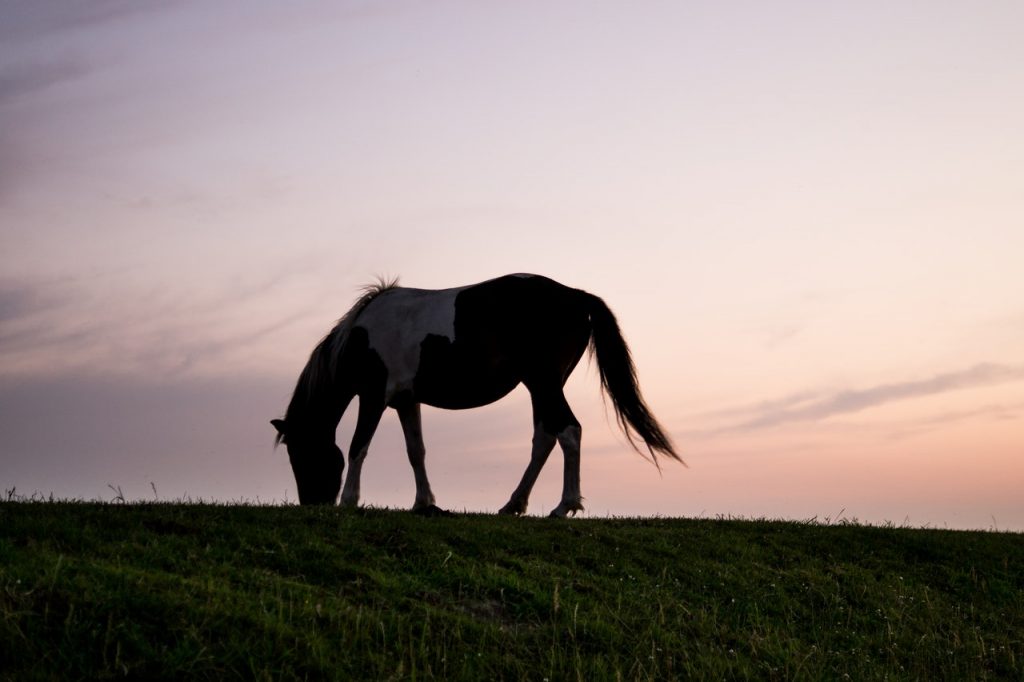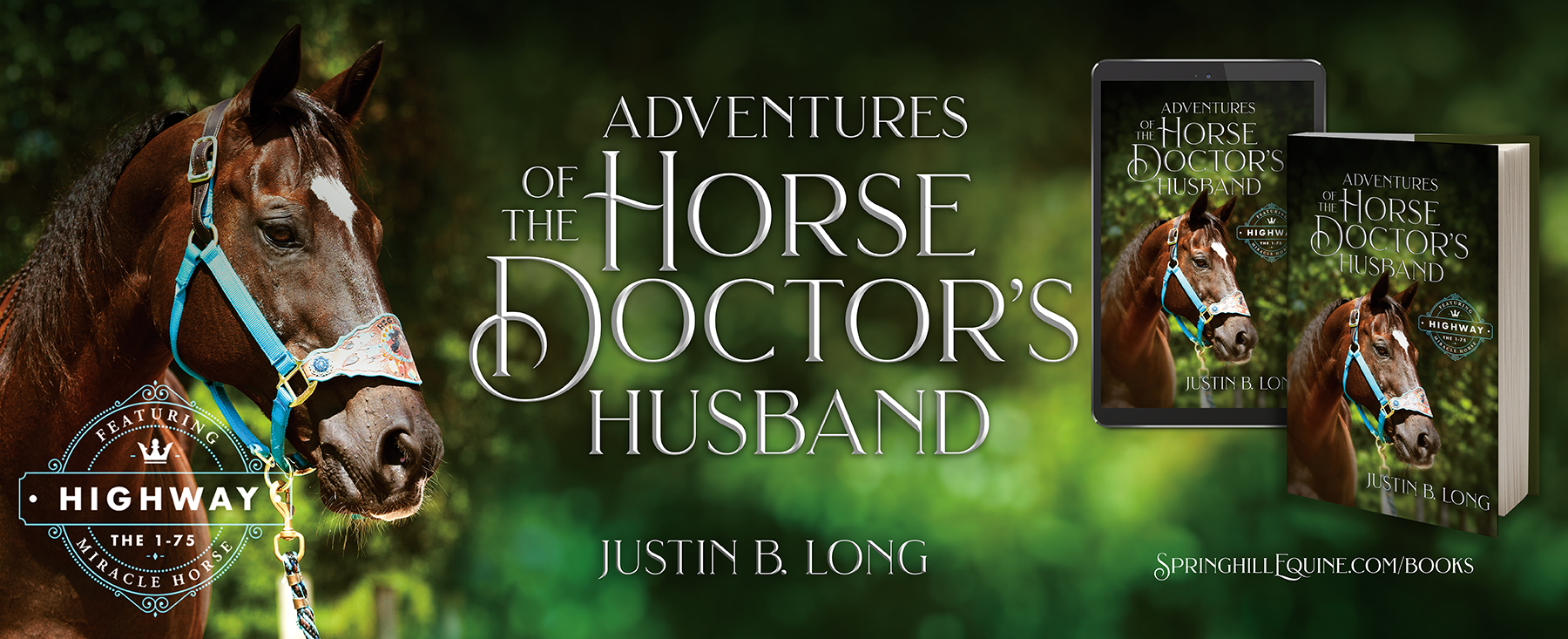I had a special treat here at the clinic on Friday night. A nice man and several trays of Italian food were set up in the barn aisle, and the humans got some continuing education on nutrition from one of the leading experts in the country! Dr. Marty Adams gave everyone a refresher in general equine nutrition, as well as some goals for feeding horses with specific problems. I was mostly there for the table scraps, but I did manage to learn a thing or two about feeding horses while I was hanging out.
Feeding the healthy horse
The way we feed horses has changed a lot over the last few decades. Back in the day, most people would feed their horses some combination of oats, corn, and barley. While these big 3 are still utilized as ingredients in many horse feeds, we now know a lot more about how to provide a balanced and complete feed ration for horses.
When choosing a feed for your horse, there are some general guidelines you want to follow. Unless your horse is performing at the highest level of work such as racing, endurance, or Grand Prix jumping, your feed should be less than 20% NSC. NSC stands for “non-structural carbohydrates,” and involves a tricky calculation to figure out. NSCs are basically your white bread and pasta…those dreaded “carbs” we are all told by our doctors to keep an eye on.
Other than carbs (which are often not even listed on your feed tag for…reasons) the 3 main values you want to pay attention to in your feed are protein, fat, and fiber. Just like in humans (and cats who are trying to bulk up, such as myself) protein is going to be key for building muscle. Your horse’s topline will never improve with any amount of exercise if you’re not providing the building blocks his body needs. Fat is good if you want your horse to gain weight; bad if you want your horse to lose weight. Fat also has other hidden benefits such as healthy skin and a shiny coat. Fiber is good for providing bulk and maintaining gut health.
With all that in mind, let’s forge ahead!
Feeding the horse with insulin resistance
As a diabetic cat, I place myself in this category. However, all of my food comes in a convenient little can. If you own a fat horse, you have probably heard these recommendations from one of my docs before. Overweight horses with equine metabolic syndrome/ insulin resistance/ insulin dysregulation are very sensitive to sugar spikes. A rapid burst of glucose causes an excessive rise in insulin in these horses, which can even be dangerous and result in a laminitic episode. For this reason, we need to limit sugars and starches (those ‘carbs’ we warned about earlier). We also would like most of these horses to lose a couple pounds, so we need to limit calories as well.
A good place to start is with a low-starch, low-calorie feed such as Nutrena SafeChoice Special Care or Purina WellSolve W/C. Now, if you are feeding your tubby pony less than the minimum feeding amount recommended on the bag, you will want to round out his or her diet with 1lb of a ration balancer daily, such as Purina Enrich Plus, Nutrena Empower Topline Balance, or ProElite Topline Advantage. This will ensure that your horse is still getting all of the nutrients, vitamins, and minerals he needs.
In terms of hay, you are going to want something low carb, but also low calorie (aka Digestible Energy). The only way to truly know if your hay fits these criteria is to have it tested. Let one of my minions know if you are interested in this service, and they can make it happen!
Feeding the horse with a muscle disorder
Do you have a horse that has been diagnosed with PSSM, or that has a history of tying up? Horses with these sort of muscle conditions have trouble storing and breaking down glycogen (a metabolite of glucose) to utilize it for energy. For this reason, we need to provide the majority of their calories in the form of fat instead of carbs (glucose).
Again, you will want to start with a low- starch feed such as Purina WellSolve L/S, or ProElite Starch Wise. If your horse is underweight or in moderate to heavy work, you may also consider Nutrena ProForce XTN. Next, you will want to add in as much fat as possible. A great way to do this is with a supplement such as Nutrena Empower Boost, Purina Amplify, Legends Rice Bran, or ProElite Omega Advantage. You can also add pure fat in the form of Corn Oil, but some horses don’t like the taste.
Alfalfa is a great hay choice for these horses, being consistently low starch yet higher calorie. By providing a high fat/low starch diet, you are effectively shifting your horse’s metabolism to avoid the pathways that lead to him or her tying up.
Feeding the performance horse that needs more “oomph”
I wish I could say I were a performance animal…but alas the most exercise you will see me doing on a daily basis is swatting a dying moth around the floor with my paw. Horses in moderate to heavy work need enough carbs AND fats to meet their high energy demands, in addition to plenty of protein to allow them to develop muscle through exercise.
In my humble cat opinion, there are way more feed options than necessary in this category relative to the number of horses that actually exercise enough to require them, but here are my top Tony picks for performance horse feeds: ProElite Performance, Nutrena ProForce XTN, Purina Strategy, Nutrena ProForce Fuel, or Purina Ultium. As far as hay goes, you really can’t beat alfalfa for keeping up with the protein and calorie demands of a horse who exercises 5-7 days per week.
If you’re already feeding one of these at the recommended amount and still not getting the results you wanted, consider adding in a protein supplement such as Purina SuperSport or an electrolyte supplement such as Progressive Nutrition Aqua-Aide. You can also top-dress your horse’s feed with one of the ration balancers I mentioned earlier (Purina Enrich Plus or Nutrena Empower Topline Balance).
I could really blubber on about equine nutrition all day long… there is so much to this topic. But your best bet is probably to pick the brain of one of my handy dandy horse docs the next time they are out at your farm. They can address any specific nutrition questions or concerns you may have within the context of your horse’s particular situation. They know the feeds, the brands, where to get them, and how to decipher those tricky little bag tags. So, be sure to chat about nutrition at your next wellness visit, and when doc is impressed with how much you already know, tell her you learned it from Tony!
Yours truly,
Tony the overfed cat
P.S. Have you been listening to the podcast that the humans do? It’s one of the most popular podcasts in the Pets and Animals category in the United States! If you’re not sure what a podcast is, that’s okay. No, it’s not a video. Just click here to
go to the podcast page. I promise you’ll understand once you get there. It’s okay if you’re on your phone, it will work on any device. Trust me, I’m a cat 🙂


